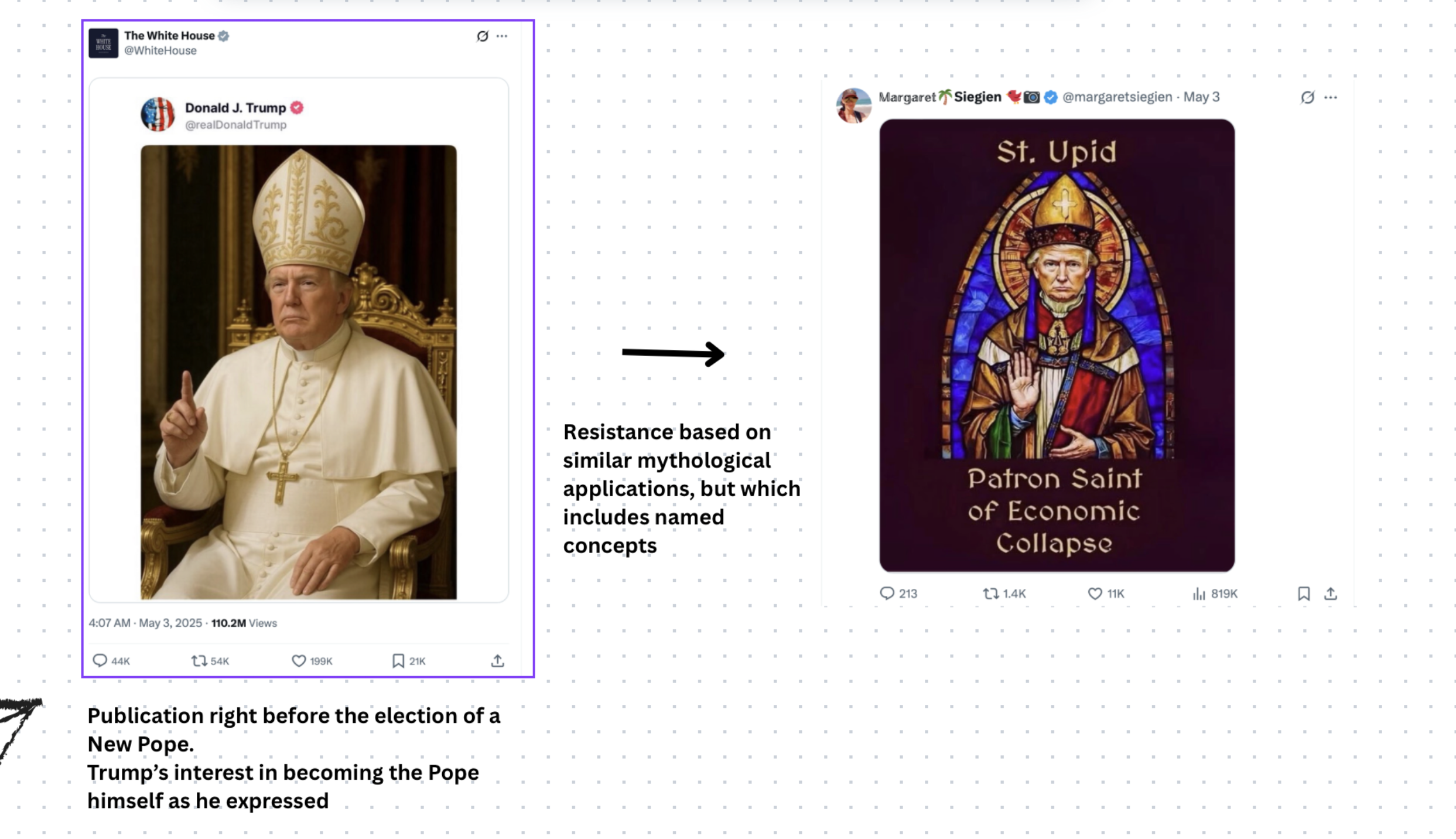Enchantments of Modern Day Authoritarian Politics
How do we integrate stories from the past into our everyday lives? What type of representation do we choose to position ourselves within a certain social group, and how do we distinguish the participants from the same group? How do we rely on specific ideology and shape its truth value?
My research focused on the exploration of magical thinking within contemporary authoritarian politics, using Russia and the United States as case studies and analyzing communication on social media platforms such as Truth Social, Telegram, and Facebook. Specifically, I examined the motivations and techniques employed to sustain the authoritarian ideology, which is structured on irrational and mythical principles. Whether its an attraction to a newly ‘Big Beautiful Bill’ in the US or a belief in comparison of Ukrainians with Nazists by Russians, we always become influenced by the part of absurdity and hidden knowledge of any ideology which doesn’t provide clear explanations but create a feel and promise of better future (Gellner 1978: 72). Authoritarianism takes advantage of mythological constructions, manipulating our emotions by switching over the meanings and adapting it to different forms of presentations (Barthes 1984). We are lured by the easygoing form and technique provided to us, getting attracted by the play with our irrational and unconscious desires that mythological narratives guarantee. After my research period dedicated to exploring the topic and uncovering specific examples, I want to take a moment to reflect on how the knowledge could be developed further and integrated into different pathways.
First, it is interesting to think of the modes of resistance to such influences, finding the possibility to break the linearity of mythological imagery and promoting the alternative agencies within it. Barthes' idea of the possible breakage of myth influence by naming its concept and the linguistic model of Dell Hymes (1974), which helps to analyse the language usages, allows to create a basis for such resistance work. The combination of such theories might produce a pattern that helps to reveal the hidden ideological structures people are affected by. The production of resistance media content, which will signify and mock structures of the initial ideological product, could grow into a separate project idea. The example to demonstrate this could be the comment under Trump's picture where he presents himself as a Pope (Fig. 1). The picture provided in response uses the same mythical structure, however, it explicitly names the key concepts that allow us to see presented reality from a different angle (‘Patron Saint of Economic Collapse’). Such knowledge could enhance the understanding of modern-day political influences, supporting communities and organisations in creating more effective campaigns of resistance to disinformation and manipulative content.
Also, gained knowledge nurtures me as a personality, extending my critical scope of analysing and working with the media. It allows me to take an active leadership position in a sense of understanding the diversity of media usage and responses to it, minimizing manipulative effects on people, and respecting the boundaries of specific communities. As a creator of content, I expand my ability to produce more engaging and sustainable outcomes, considering the aftereffects of any imagery I employ.
Overall, the project will benefit from conducting a fieldwork experience involving interviews and participant observation with communities affected by authoritarian ideologies. Such experience will help to see the real implications of the ideologies in day-to-day life and allow to test the changes the resistance effects might introduce.

Bibliography:
Barthes, R. 1984. Myth today. In Mythologies. [Online] Available at: https://addcsummer2013.wordpress.com/wp-content/uploads/2013/08/myth-today-barthes.pdf [Accessed 5 June 2025].
Gellner, E. (1978). Notes towards a Theory of Ideology. L’Homme, 18(3/4), 69–82. http://www.jstor.org/stable/25159384 [Accessed 30 June 2025].
Hymes, D. 1974. Foundations in sociolinguistics: an ethnographic approach. Philadelphia: University of Pennsylvania Press. (Chapter: Toward Ethnographies of Communication)


Please sign in
If you are a registered user on Laidlaw Scholars Network, please sign in